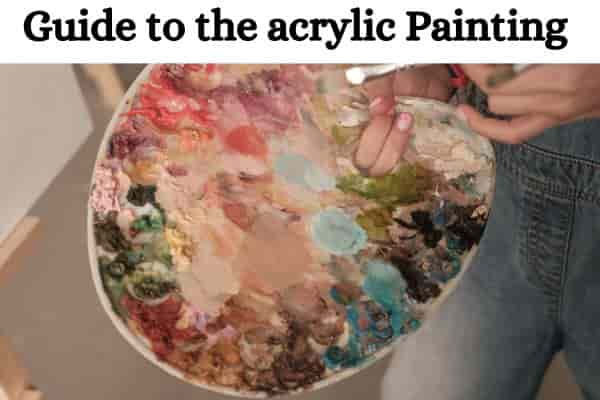In the world of art, there are two techniques of painting, one is classic and the other is modern. Classic techniques include those painting styles that are brought to us by the Old Masters. These techniques include oil painting, tempera, egg tempera, glazing, use of mediums, and many more. On the other hand, modern techniques are made in recent years after the 2000s. These techniques include acrylics, Impressionism, Cubism, and many more. Acrylics are a modern art technique that has been made in recent years.
This blog aims to provide a complete guide about the techniques, things to know, things to avoid, and so many other things related to acrylics.
Let’s start!
Before starting, it is compulsory to cover some basics about acrylics such as the origin, purpose, and definition of it.
What is acrylic painting? In 1934, an acrylic resin chemical was developed by a German chemical company and then in 1940, the properties of oil and watercolor have been combined together to form a new paint. Soon, after that acrylic paint has become a house paint that was so durable and easy to use. Instead of oil paint, acrylic paint dries at a much faster rate which makes it more popular. From time to time, artists introduced new techniques and methods to improve this technique. Today, acrylic paintings are really popular that are known for their versatility and non-toxicity.
Know about the drying time of oil paints
An acrylic resin is a thermosetting plastic material that is made from acrylic acid. An acrylic painting provides a matte finish that is dull in color but more like watercolors in appearance. It can be painted on any surface including wood, panels, canvas, papers, impermanent materials and so many other materials that are oil and wax free.
Compared to oil paints, acrylic paint does not require so many mediums and so much effort to prepare the surface. It is just simple like watercolors.
Recommended: Begginer's guide to the oil painting
Advantages of Acrylic Painting
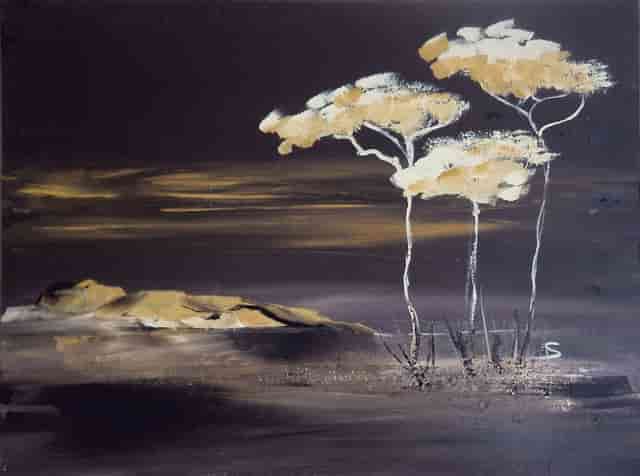
Acrylic painting provides so many advantages that make it more popular, beginner’s friendly, and the choice of artists as well as collectors. These advantages are given below:
1. Versatility
Versatility is the ability to adapt to many different functions of painting. As acrylic paints are highly versatile as compared to other mediums such as oil paint, they can be used on a variety of surfaces with a variety of styles. You can even use acrylic paint to do experimental and abstract artwork. It allows artists to explore multiple techniques and styles.
Painting pottery, indoor & outdoor walls, metallic surfaces, glass, rubber, and wood, etc are all common examples of the versatility of acrylic paints. There is also a high scope of this medium due to its high versatility.
2. Quick Drying Time
Acrylic paints are famous for their fast drying ability that enables an artist to create a masterpiece within hours of work. Instead of oil paintings that took months to dry completely, these paints are so punctual to dry on time. However, the addition of drying retarders can increase the drying time of these paints.
There is a common question for beginners can we do glazing with acrylics? Yes, glazing is possible with acrylics also but only when you can manage to thin down the acrylic paints. As you know water can be added to thin them. So add some water to do glazing. to increase the drying time of your acrylic paints, add drying retarders for best results.
3. Durability & Longevity
Acrylic paints are also durable that can stand for several years. If you can manage to varnish your acrylic painting then it could be more durable. It also provides a faster painting process but there is a little time to make corrections between the layers that also have to be noted.
After drying, these paints create a firm surface that is resistant to cracking and any other harmful issues. If we talk about oil paintings, cracking is one of the most common reasons that needs restoration from time to time.
4. Color Stability
The colors of acrylic paints stay the same after drying because the colors you mix stay vibrant and in their original form for a long time. Applying a varnish layer can make it glossy but without varnishing, it can stand in its original form as well.
5. Odour and toxicity
Acrylic paints are made with acrylic resins that are chemical in nature but still, they are non-toxic in nature that do not emit any toxic fumes. It is suitable for artists who are sensitive to the smell of chemicals. This advantage allows the artists to work in less ventilated areas as well.
Disadvantages of Acrylic Painting
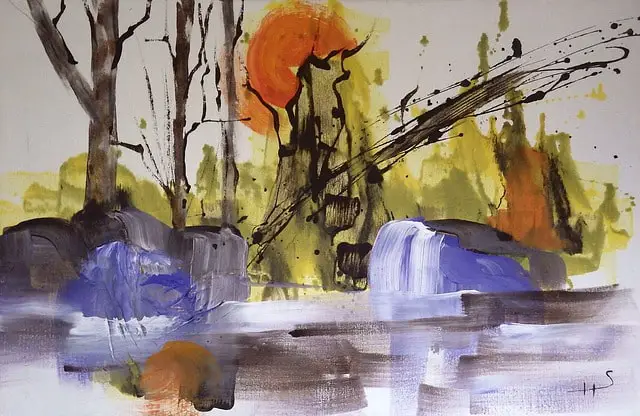
No doubt, acrylic painting is a winner in the modern world but there are some common disadvantages that you have to take care of.
Limited Blending Time
Acrylic paints dry at a faster rate which is not a good option for those who want to do blending but this problem can be solved by using drying retarders. Drying retarders are liquids that increase the drying time by up to 24 hours or more.
Limited time for corrections
Another issue faced by artists about the drying time is limited time for corrections. those who adapt to acrylic paints do not feel any issues but those who are beginners often faced so many issues. As they have to apply corrections from time to time, acrylic paints do not allow as many corrections as oil paints do.
Effect of water
As acrylic paints are water soluble, a single drop of water can ruin the whole painting when it is in dried form. You need to be careful about dealing with water in front of the painting or canvas.
Mediums
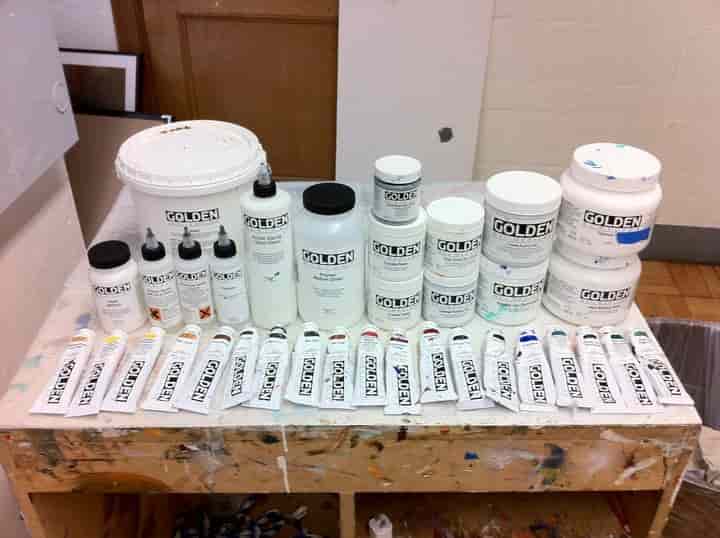
Gel Mediums
Gel mediums are used to increase the consistency of the acrylic paints. The thickness and viscosity of acrylic paints can be controlled by the use of these mediums. Such mediums especially use for impasto techniques and texture building. The common gel mediums include Liquitex professional matte gel medium, Impasto clear gel acrylic mediums, etc.
Matte Mediums
Sometimes, artists feel the problem of extra glossiness that look bad. To decrease glossiness, matte mediums are commonly used to make the surface dull. Common Mette mediums include Liquitex matte gel mediums, Liquitex Mette fluid mediums, etc.
Gloss Mediums
gloss mediums enhance the shine and glossiness of acrylic paintings. They are used during the painting procedure and the addition of these mediums not just increases glossiness but also impacts the drying time. These mediums are also used on the final varnish to protect the painting from dust and dirt.
Fluid Mediums
These mediums are specially designed to increase the fluidity and flow of acrylic paints. As compared to acrylic paints, oil paints are high in fluidity but the addition of such mediums in the acrylics really boosts the flow and enables artists to create the masterpiece so smoothly. Such mediums also promote glazing, pouring, and blending.
Retarders
Drying retarders are used to increase the drying time of acrylic paints to allow more time for the artist to make any corrections. They are commonly useful when working on large surfaces in hot weather conditions. When you go for outdoor acrylic painting, take a drying retarder with you.
Texture paste
Texture pastes are used to add two or three-dimensional effects to acrylic paintings. They can be applied on the canvas or any other underwork surface.
Glazing Mediums
Glazing means applying a transparent layer over another to in-depth and high-quality paintings. Glazing mediums can be added to the acrylic paint to achieve transparency.
Pouring Mediums
Pouring is a painting method in which acrylic paints are mixed or poured in each other onto the canvas. It is a type of fluid art and a modern technique that is getting popular day by day. Pouring mediums are liquid forms that convert acrylic paints into pourable paints. There are also multiple pouring techniques, including dirty pouring and direct pouring.
Techniques
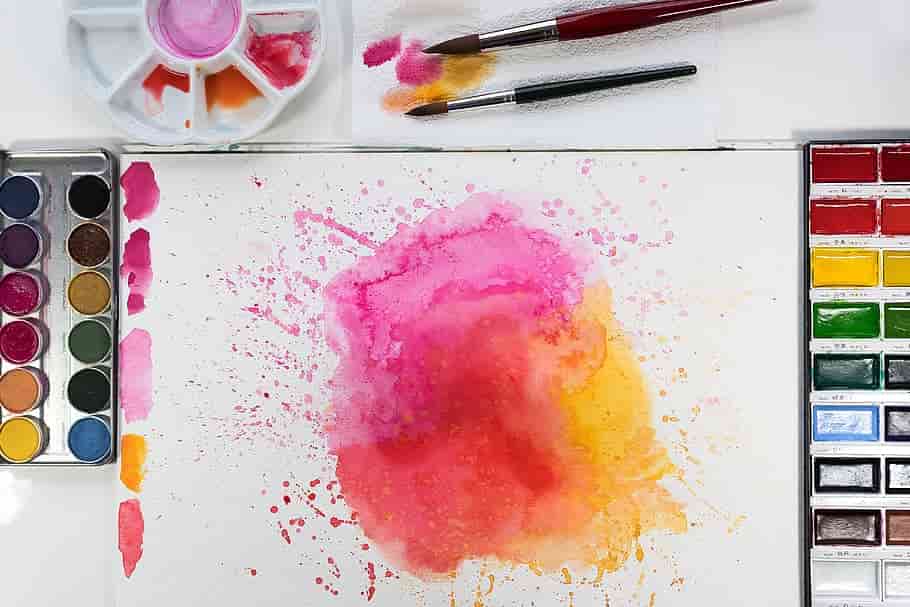
Acrylic painting can be done in several ways with several techniques. These techniques are as follows
Wash
In this technique, we used to dilute the acrylic paint with water to create a watery effect. Usually, water is used to thin down the acrylic paint as we use linseed oil to thin down the oil paint. In this way, we get the same texture as watercolors that are slightly transparent in nature.
Glazing
Glazing is the process of coating a transparent layer over another layer to give high details in the painting. This technique is suitable to create reflections or shadows of mountains and water or any subject. Glazing is also a famous technique that gathers the attraction of art collectors. Glazing can alter the color of inner layers.
Drybrush
The drybrush technique is mainly used to create rough strokes. In this method, artists use a dry brush with less amount of paint to create texture and strokes. This technique is very useful to create a weathered effect.
Wet-on-wet
Wet-on-wet is a popular technique that was introduced by Bob Ross in his Television Shows. This technique is popular for oil painting but in today’s modern world, artists also work with this technique on acrylic paints. The wet-on-wet technique can be used to create transitions and softer backgrounds and also atmospheric effects.
Impasto
Impasto is a technique in which a high quantity of acrylic paint has been used to create three-dimensional effects. Artists often use their palette knife to paint with this technique. A large quantity of acrylic paints is used while working with this technique.
Stippling
Stipling is a drawing process in which artists create small dots of paint with a brush, sponge, or fingerprint.
Sgraffito
In Sgraffito, artists used to apply a thick layer of acrylic paint over the canvas and then use the palette knife to create additional changes to achieve desired results.
Pouring
As we discuss further, pouring is a technique in which artists use a pouring medium to make the paint pourable into each other. the final results of this technique are really satisfying and heart-touching.
Masking
In this technique, artists cover the edges with masking tape and then do the painting process. It allows to create crisp edges that look really wonderful.
Blending
Blending requires a high flow that can be achieved by the addition of a Flow Improver medium can be found easily at any art shop. Although oil paints are suitable for blending. There is nothing that can stop acrylic paints to do blend as well.
Common Myths About Acrylic Painting
Although acrylic painting is the best medium of painting in the modern world there are some common misconceptions among beginners due to which they can’t put much effort.
- Acrylic paint is difficult to work with due to its fast drying time: Those who shift from any medium to acrylics faced a major issue of fast drying which doesn’t allow them to work effectively but in reality use of mediums and techniques is much more important to work effectively. For drying time, there are so many brands that offer drying retarders that don’t affect the original quality of these colors.
- Acrylic paints always fade over time: Using cheaper quality or student-grade acrylic colors can cause discoloration over time that is unsatisfying for the artist. Improving the quality of paints can really solve this issue.
- Acrylic paints cannot achieve the same level as oils: There is no comparison between oil paints and acrylic paints. But if the oil pigments are providing more detail and texture then you must need to know that oil painting is not an easy process. Working with oils is tougher than acrylics and we have seen so many acrylic paintings that look much better than oils. It depends upon the techniques, not the paints.
- Acrylic paintings cannot be corrected once they dry: Mistakes can simply wipe off before the paint dries. If you made a mistake then correct it timely. Simple!
- Acrylic paints are harmful and toxic: Instead of other paints, acrylic paints are water-soluble and they are non-toxic in nature. Moreover, the mediums used in acrylic paints are also non-toxic.
Recommended: Can we do oil painting and acrylics together?
Common Questions of Beginners About Acrylics
There is a series of questions that arise daily by beginners. We cannot cover all the questions in this blog but we are going to cover at least 6 most arising issues. Later in the series of acrylic paintings, we will share more helpful content.
How to create luminosity in acrylic painting?
Creating luminosity means making the artwork more brighter and glowing. Light colors are highly recommended to achieve luminosity. For example, in the underpainting process, always start with a brighter color such as yellow, sky blue, or orange. The underlying layers will provide shine to the whole surface.
Glazing can also be effective because the transparent layer over another layer provides richness, depth, and luminosity but only when you use brighter colors. Following are the brighter colors that are recommended to use:
- Cadmium Yellow
- Cadmium Orange
- Cadmium Red
- Pithalo Blue
- Phthalo Green
- Quinacridone Magenta
- Fluorescent Orange, Green, and Pink
How to glaze a finished acrylic painting?
For glazing, you need the following things:
- Acrylic paint
- Palette
- Brushes
- Brushes
- Glazing mediums
Before starting, make sure to select the transparent colors that are suitable to glaze such as Phthalo Blue, Transparent Red Iron Oxide and Transparent Yellow Iron Oxide, etc. After selection, mix your glazing medium with your colors. Make sure to choose to add only a small amount of medium. Take paper and test your glaze to avoid any mistakes. Now, use a soft brush to apply a glaze to your painting. Also ensures that the previous layers get dry before you apply the glaze layer.
How to sign a painting in acrylic?
Signing a painting signifies the ownership of the artist. All the professional artists have their own sign which is proof of their production. To sign your painting, find a fine-tip brush or a paint marker. Choose a location where you want to sign. Usually, artists sign at the bottom right or bottom left corners. Prepare the acrylic paint to sign the painting. choose only those colors that will look prominent such as black over all the brighter colors and white for black colors.
Practice the signature on a piece of paper and finally, you are ready to sign your own painting.
How many coats of gesso are for acrylic painting?
The most recommended guideline is to apply only 2 to 3 coats of gesso on the surface before starting acrylic painting. Make sure to let the gesso dry completely to avoid any problems.
What is the difference between acrylic and oil painting?
| Acrylic Painting | Oil painting | |
| Drying Time | 24 hours | 6 months |
| Price | Between 10$-50$ (12 colors) | 30$-300$ (12 colors) |
| Finish | Matte | Glossy |
| Texture | Smooth & Creamy | thick and buttery |
| Thinning Medium | Linseed oil | Water |
| History | Modern Since the mid of 19th Century | Ancient since 7th Century |
| Popularity | Moderate | Moderate |
| Selling price | Less | More |
| Scope | High | High |
How to make acrylic painting glossy?
Applying a gloss varnish is designed to add a glossy finish to the painting. There are so many brands that are offering glossy varnishes such as Liquitex Professional High Gloss Varnish.
To use the gloss varnish, make sure that your painting has been completed and all the layers are fully dried. Prepare the varnish by shaking it very well. Test it on paper to make sure it working smoothly. Use a varnishing brush to start varnishing the upper surface. If you don’t know about varnishing brushes then we want to you guys know that it is a wide and soft-bristled brush that is specifically designed for varnishing. After the whole process, let the painting dry and maintain a normal temperature.
FAQs
What can you add to the paint to make it glossy?
Glossy mediums can be added to get a glossy finish. some of these mediums include Liquitex professional effects medium.
How to increase the drying time of acrylic paints?
Use a drying retarder to increase the drying time.
How to tell if the painting is oil or acrylic
A glossy painting must be oils and matte would be acrylic but sometimes varnishing can create differences.
What are the best acrylic paints?
1. Winsor & Newton Acrylic Paint
2. Liquitex Acrylic Paints
3. Citadel White Acrylic Paint
Final Words
In the world of art, acrylic painting is the fastest-growing medium with high scopes. They are so versatile in nature which is the best advantage of these paints. The common advantages of acrylic painting include versatility, quick drying time, durability, color stability, and nontoxicity. No doubt that there is no comparison between oils and acrylics but both have their own characteristics and advantages. The common mediums of acrylics include gel mediums, matte mediums, gloss mediums, retarders, texture paste, fluid mediums, pouring mediums, and many more.
Acrylic painting can be done by using a lot of techniques such as washing, glazing, drybrush, blending, impasto, and many more. we hope that this beginner’s guide would be helpful to provide the desired knowledge that our users wanted to seek. For more information about acrylics and oil painting, we do recommend visiting our website.
